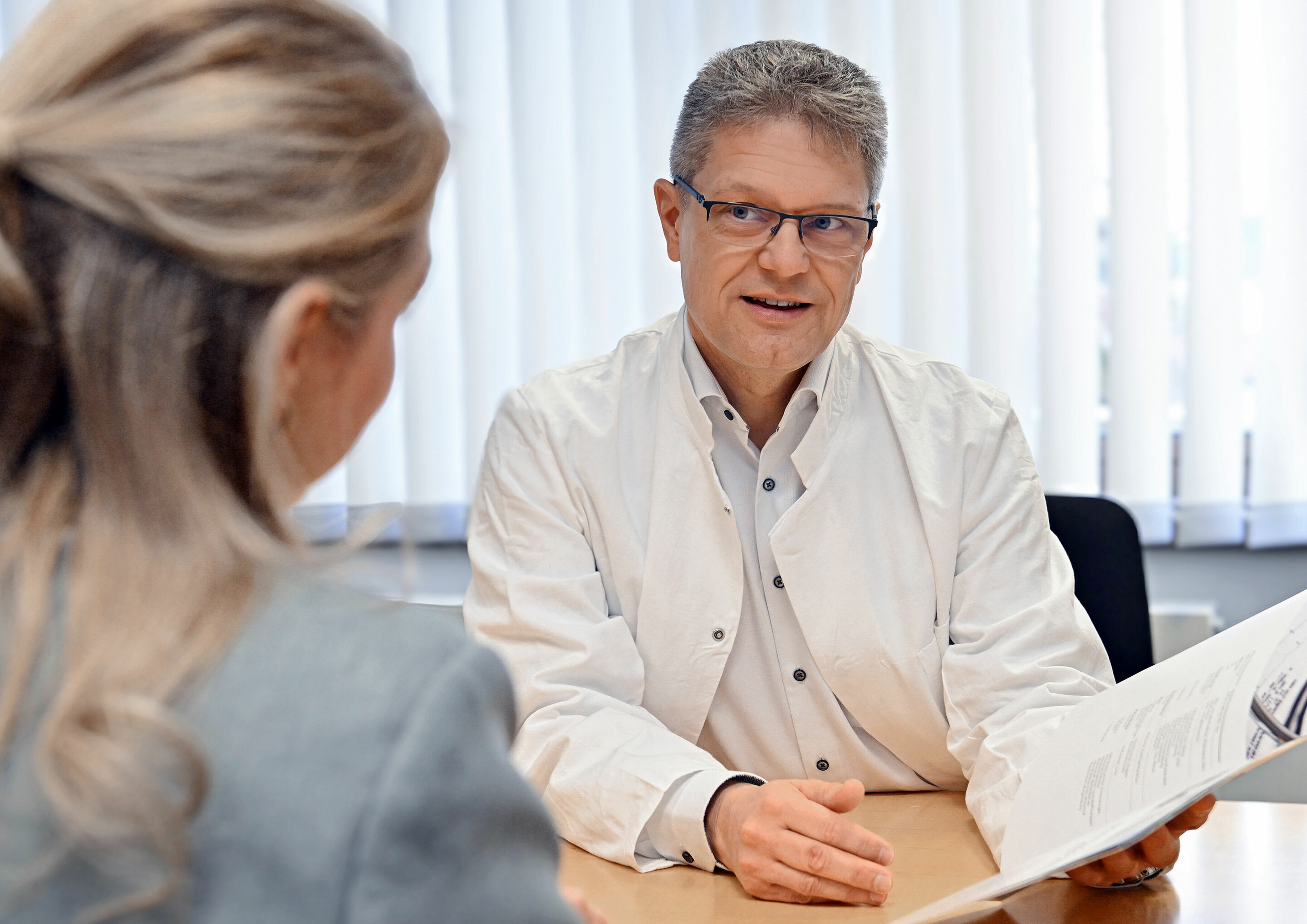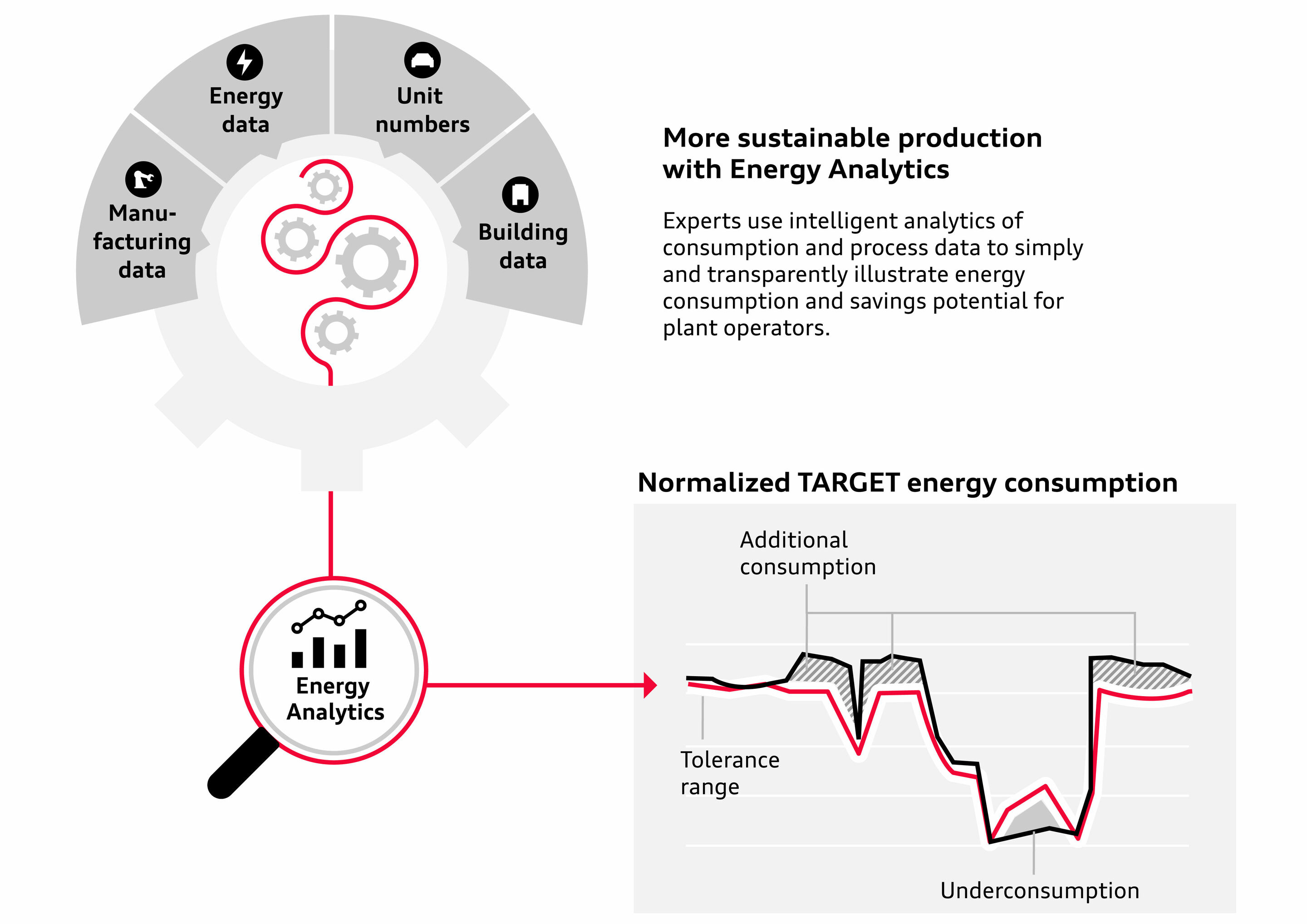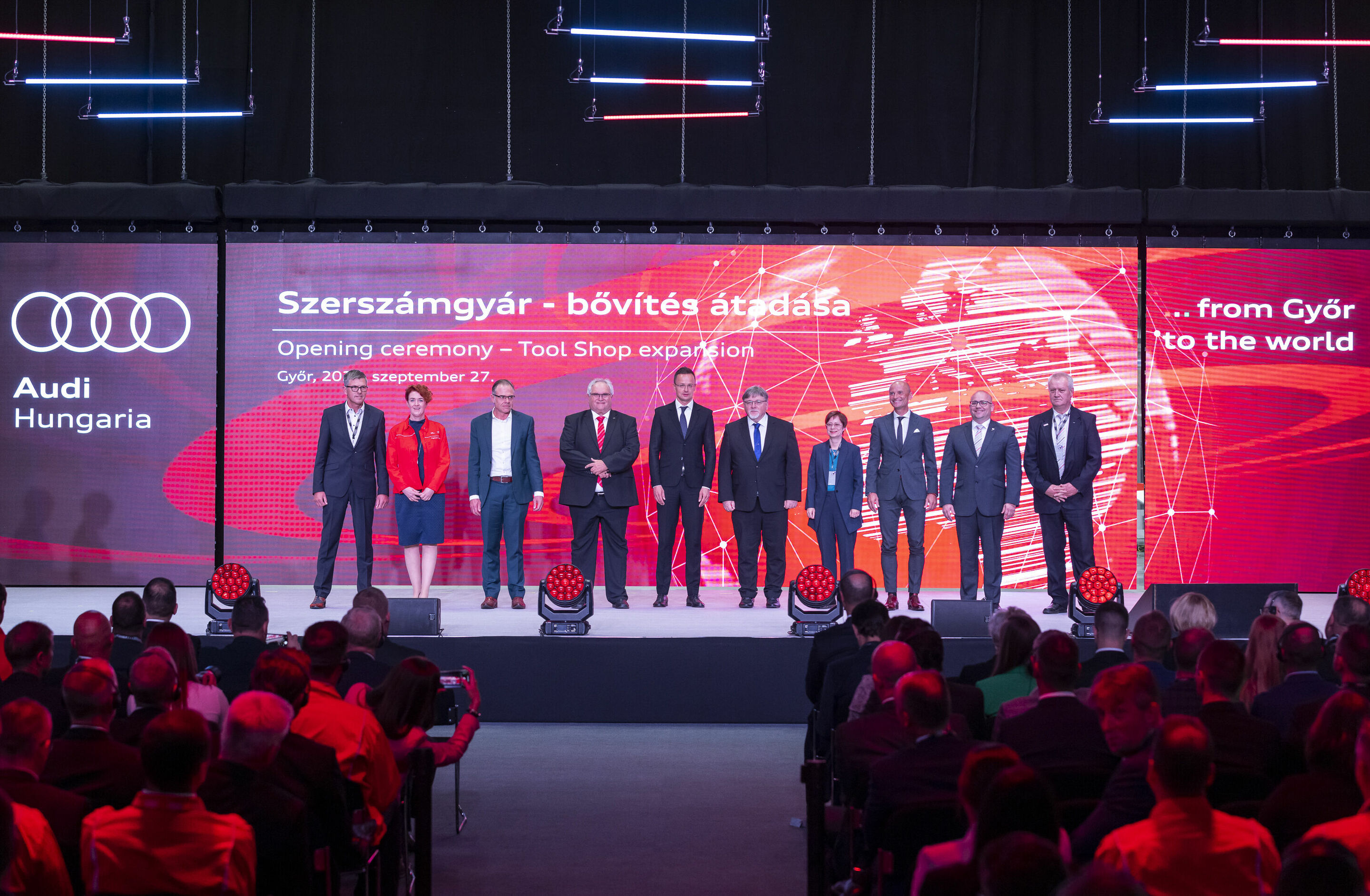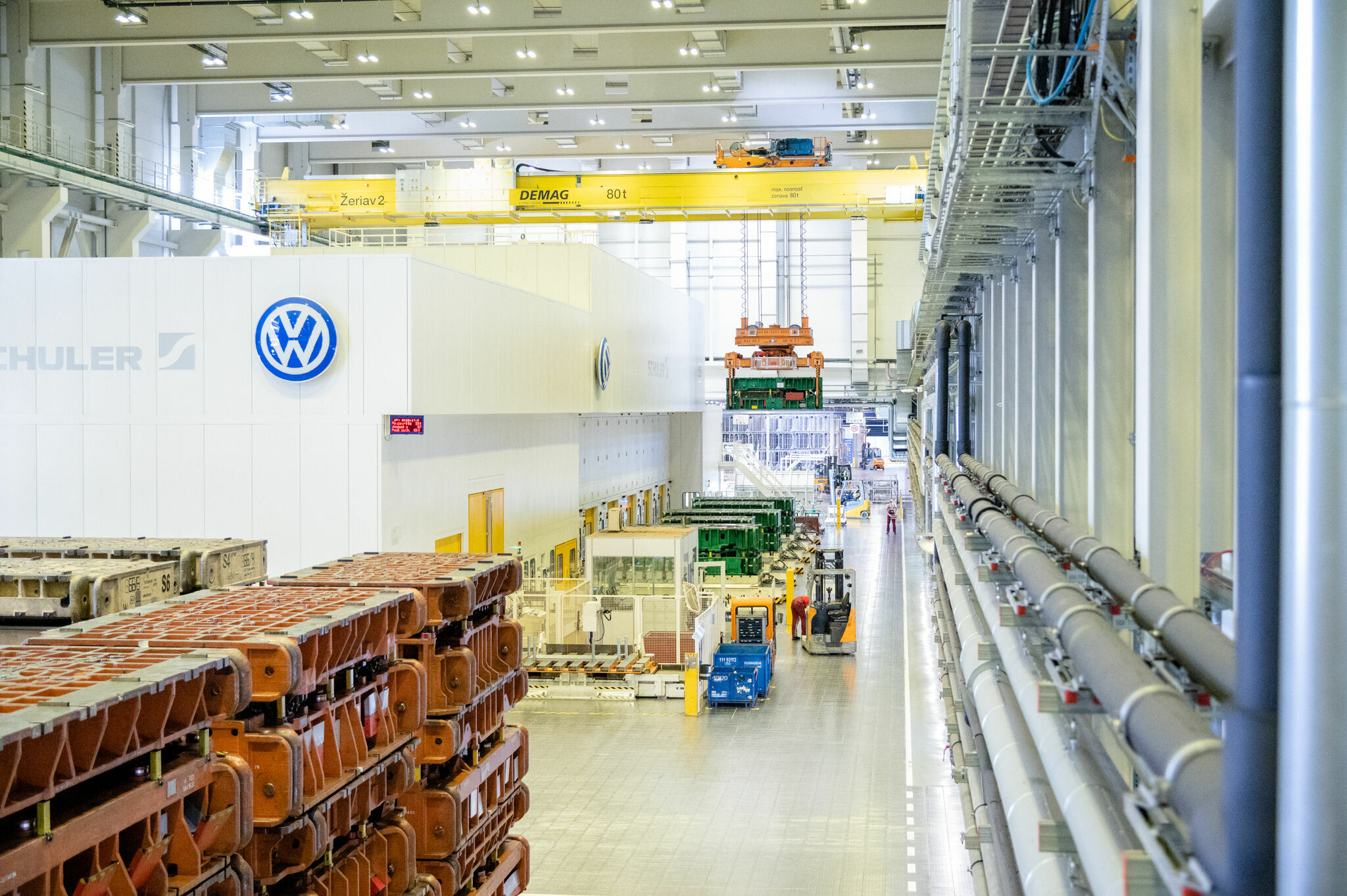Search
All results
(231)
MediaInfos
(109)
News
(6)
Biographies
(2)
Images
(40)
Videos
(2)
Publications
(12)
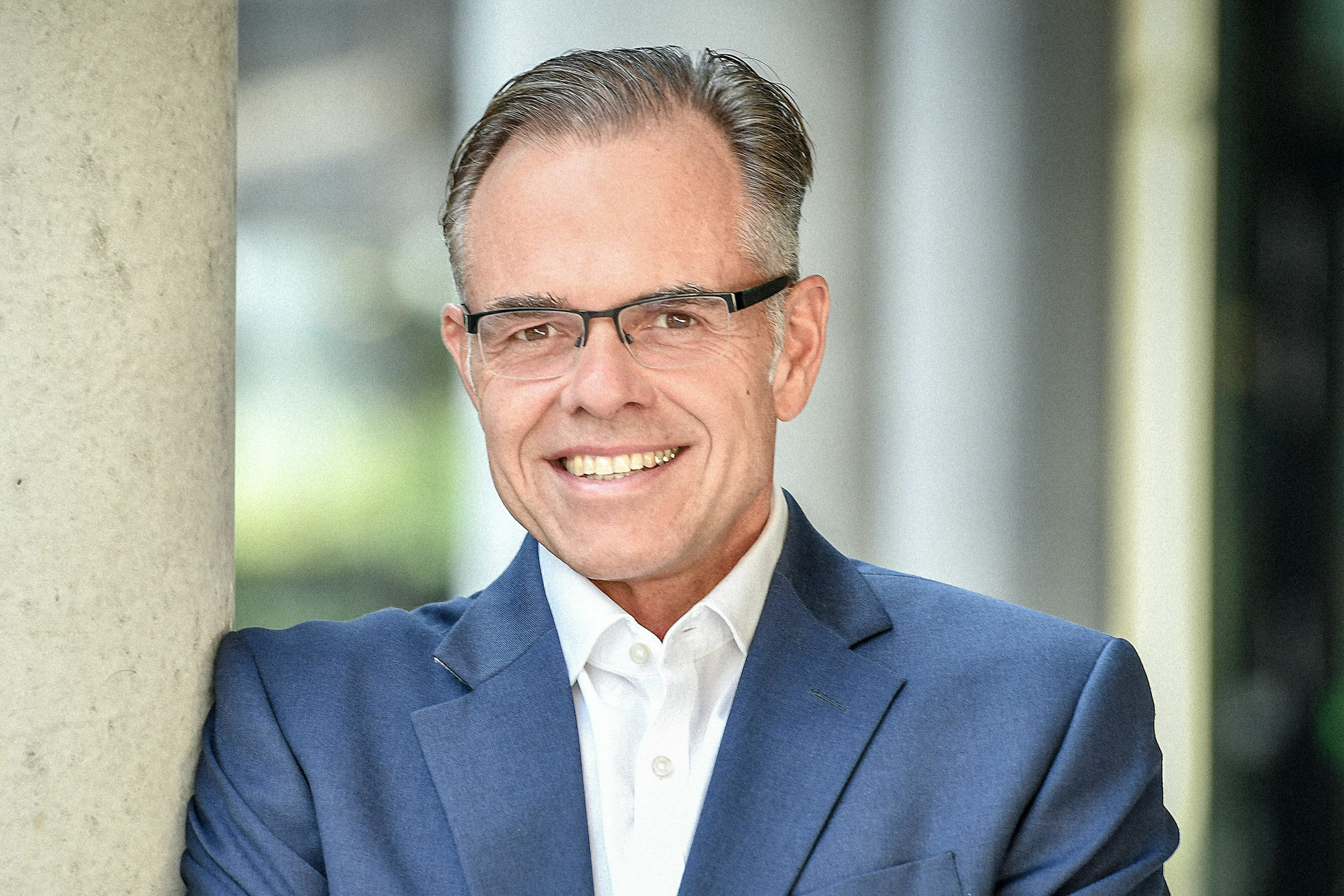 Jörg Spindler - Biography
Jörg Spindler - Biography
After studying Mechanical Engineering, he began his career at AUDI AG in 1995 in Body Shop Production Planning in Ingolstadt. After various positions in Production Planning, the graduate engineer moved to the Audi site in Neckarsulm in 2001, where he assumed his first management position as Head of Project Steering in Plant Engineering. In 2005 Spindler moved to Volkswagen Slovakia, where he was responsible for Project Steering for the Audi Q7 Body Shop. He returned to Neckarsulm in 2006. That same year, he became Project Manager for the Porsche Panamera within the Audi Tool Shop. Two years later, Spindler was in charge of the Plant Systems/Fixtures segment in the Neckarsulm Tool Shop. In 2010 he was promoted to Site Coordinator for the Neckarsulm Tool Shop and Head of the Neckarsulm Tool Shop segment. Jörg Spindler became Head of the Tool Shop of AUDI AG in 2016 and was thus responsible for the toolmaking sites in Ingolstadt, Neckarsulm, Győr/Hungary, Audi Tooling Barcelona (ATB) in Martorell, Spain, and Audi Tooling China (ATC) in Beijing, China. In this function, he was also in charge of the Competence Center for Equipment and Metal Forming Technology and thus also of the Press Shops of the Audi Group. In addition, he has coordinated the toolmaking operations of the Volkswagen Group since 2017. Since October 1, 2019, Spindler has been responsible for manufacturing engineering. Spindler's team plans all production processes from the Press Shop to the Body Shop, the Paint Shop and Assembly Shop for Audi Group plants. The newly created area develops new manufacturing technologies and builds special equipment and plant systems. It creates the basis for the production of premium automobiles of the highest quality through efficient manufacturing processes.

The electric Gran Turismo will be available as a strictly limited Audi exclusive edition at market launch Customization program has been setting standards in the personalization of premium vehicles since 1995 Studios in the Audi Forums in Ingolstadt and Neckarsulm offer customers advice to help realize their vision
The car is an unmistakable expression of one´s own personality – that is the philosophy of Audi exclusive. Since 1995, the brand with the four rings has been setting standards in the personalization of premium vehicles in keeping with this motto. An early example of this pioneering spirit was the Office packages for the first-generation Audi A8, which included a refrigerator, bar compartment, VHS player and monitor, folding table, and power curtains.
The ability to integrate high-demand design options directly into production has improved significantly in recent years. While the standard range for most Audi models boasts up to eleven colors, Audi exclusive allows customers to choose from an even broader spectrum of additional finishes, including a variety of special Audi exclusive finishes and standard colors from other Audi models. Different markets show different preferences among a range of nuances, from matte to gloss finishes in a wide range of colors. The Audi exclusive portfolio covers three main areas: full personalization, predefined design and stitching packages, and editions. Customers can choose from a range of eight main finishes for the interior, complemented by three accent colors – Alaska Blue, Iguana Green, and Calendula Yellow. They are showcased perfectly in the Bicolor packages for the Audi e-tron GT, for example. “We want to allow everyone to design their Audi to be as individual as they are,” says Michael Binder from the Audi exclusive Product Marketing team. “Every one of our customers wants to express themselves with their Audi – without saying a word.

Higher performance: Advanced drive systems and adapted thermal management enable up to 680 kW (925 PS) of output More exclusive: Specially developed RS performance mode and push-to-pass function offer optimal setup for challenging coastal roads and winding mountain passes Dynamic duo: High-performance tires with more grip at high lateral acceleration or innovative tires with improved sustainability and optimized rolling resistance
With the Audi RS e-tron GT performance, Audi is debuting its first fully electric RS performance model. The four-door coupé demonstrates bundled technical expertise – and Audi’s passion for details. Powerful, sporty, and confident, it reflects the brand’s high standards for developing and building cars. The RS e-tron GT performance is the dynamic flagship for electric mobility at Audi.
In addition to a permanent-magnet synchronous motor (PSM) on the front axle with a reinforced driveshaft and an output of 252 kW (342 PS), the electric Gran Turismo features a newly developed PSM on the rear axle with an output of 415 kW (564 PS).The increased copper density of the special hairpin winding in the electric motors’ stator maximizes current conduction. Moreover, the rotor in the electric motor at the rear is more compact and lighter. Overall, Audi has reduced the weight of the electric motor on the rear axle by ten kilos. What’s more, both electric motors have power reserves for dynamic driving situations.

In this interview, exterior designers at Audi discuss developing the design for the Audi A6 e-tron series Sascha Heyde and Wolf Seebers reveal how they brought their visionary concepts to series production Wolf Seebers remembers: “I still get goosebumps when I think about it.”
They live next door to each other, with garages adjacent, and that is where they love spending their time together. Sascha Heyde and Wolf Seebers are car guys through and through and have been friends for 20 years – and as Audi exterior designers, they shaped the A6 e-tron family together. They first revealed their vision in the stunning A6 e-tron concept and A6 Avant e-tron concept; now, they have brought the design and technology of these vehicles to series production. But how does one make one’s ideal a reality? A conversation about and with two real brothers of design.
Mr. Heyde and Mr. Seebers, the story of the Audi A6 e-tron began with two show cars. Do we still need concepts today? Sascha Heyde: We think of concepts as visions unbridled. Free and uncompromising in terms of their conception and implementation. We live in a unique age for automotive design. The importance of sustainable solutions, suitability for everyday use, personal freedom, and the evolution of Audi’s high-performance and premium quality DNA for the electric age – design can take many approaches to help shape this transition. Concepts let us quickly and systematically break down old barriers, create new worlds, and look for answers. They are leaders in innovation, representing a vision of design and new technologies.
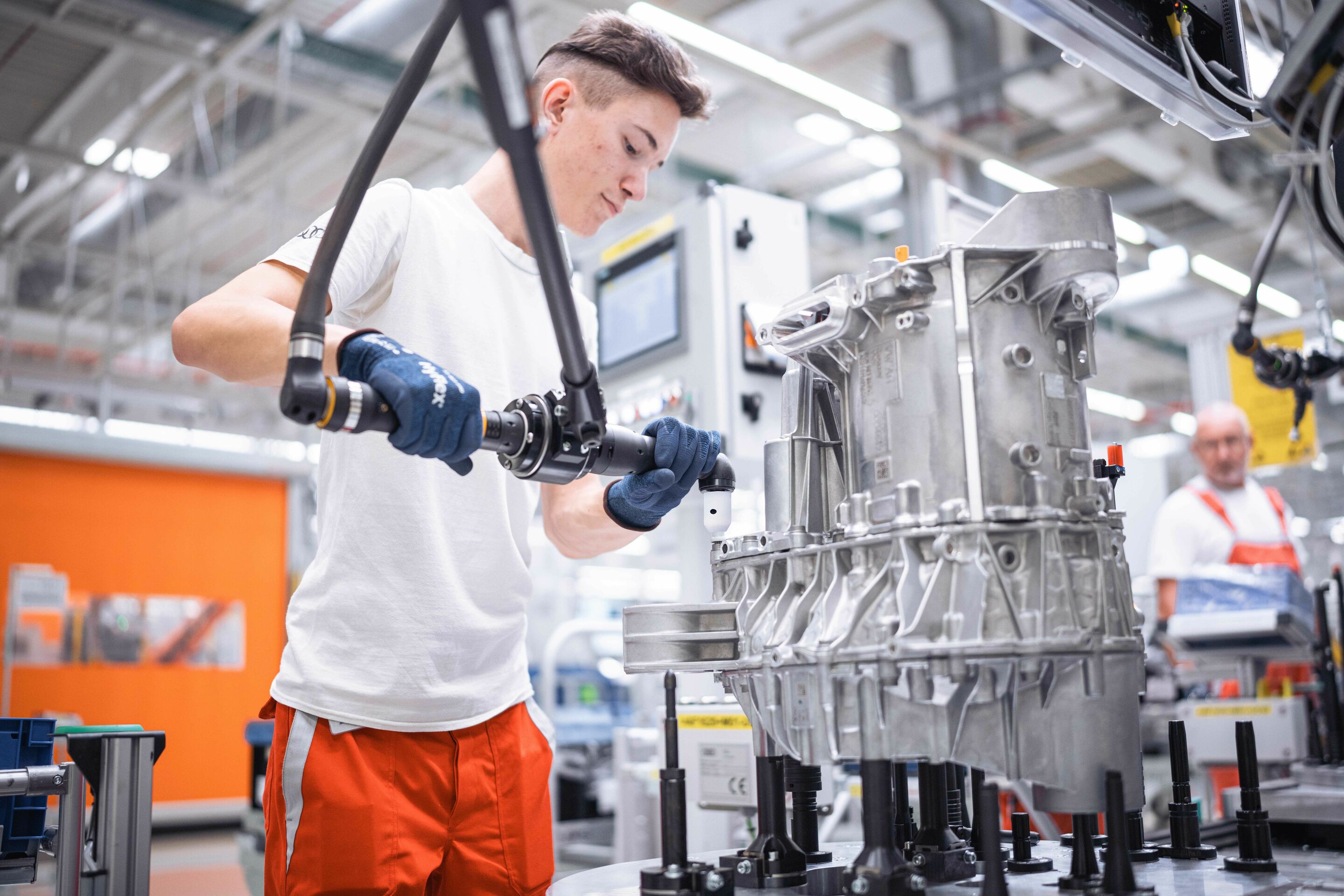
Audi Production is using the switch to e-mobility for a comprehensive transformation of the global production network and has a clear vision for the production of the future with the 360factory. Audi is pursuing a holistic, sustainable approach and is modernizing, digitalizing, and transforming its existing plants. Since 2020, the plant in Győr, Hungary, has been producing net carbon neutrally1 with the largest photovoltaic roof system in Europe and is the largest user of industrial geothermal energy in Hungary. Audi transports the electric motors for the PPE from Győr to Ingolstadt net carbon neutrally1 with the transport and logistics company DB Cargo. The Audi plant in Ingolstadt has been net carbon-neutral1 since January 1, 2024, making it the third Audi plant to make the switch after Brussels (2018) and Győr (2020). As part of its Mission:Zero environmental program, Audi has set itself the goal of achieving net carbon neutrality1 at all sites worldwide by 2025. Audi uses recycled materials for a number of components in the Audi Q6 e-tron. These materials, which are prepared using a recycling process, reduce the use of resources and ensure a closed and, therefore, efficient and sustainable material cycle. Based on currently planned production figures, they are to be used over the entire service life of the Audi Q6 e-tron. For example, the fabrics used for the Softwrap in the interior are partly based on sustainable materials. In the S line variant, the recycled fabric Elastic Melange, which is made from 100 percent recycled polyester, is used in the Softwrap. In addition to the seats and the Softwrap, Elastic Melange is also used for the door mirror.
 Development of the Audi Power Unit for Formula 1: “Significant milestones and goals achieved”
Development of the Audi Power Unit for Formula 1: “Significant milestones and goals achieved”
Adam Baker, CEO of Audi Formula Racing GmbH, and CTO Stefan Dreyer in a double interview Complete F1 Power Unit runs on the test bench and has already covered simulated race distances Development at the Neuburg site with 22 state-of-the-art test benches
Work on the Power Unit for Audi’s Formula 1 entry has been underway for more than two years. The specially created Audi Formula Racing GmbH (AFR) in Neuburg a. d. Donau is responsible for the development of the F1 hybrid drive (“Power Unit”) and has successfully completed the set-up phase. Together with the Hinwil facility, the team from Neuburg will form the future factory team with which Audi will compete in the top class in 2026. The Audi F1 Power Unit “Made in Germany” is making great progress behind closed doors. AFR CEO Adam Baker and AFR CTO Stefan Dreyer provide an insight into the current status.
Work on the development of the Audi Power Unit for Formula 1 has been underway at the Neuburg facility since spring 2022. What has been achieved so far? Baker: After just two years, our Power Unit, consisting of a combustion engine, electric motor, battery and control electronics, is running dynamically on the test bench. Successfully marrying the various components into a single unit is the result of hard work and great teamwork. The Audi Power Unit has already covered simulated race distances on the test bench. We gained a lot of testing time with the individual components in 2023 and were able to incorporate the experience gained into the next construction stages in parallel. Significant milestones and goals have been achieved, which gives the entire team a good feeling. Dreyer: We implemented a very ambitious modernization and expansion of our test facility. Today, we have 22 state-of-the-art test benches at the site. Our new development tools are state-of-the-art and have enabled us to achieve a steep learning curve.
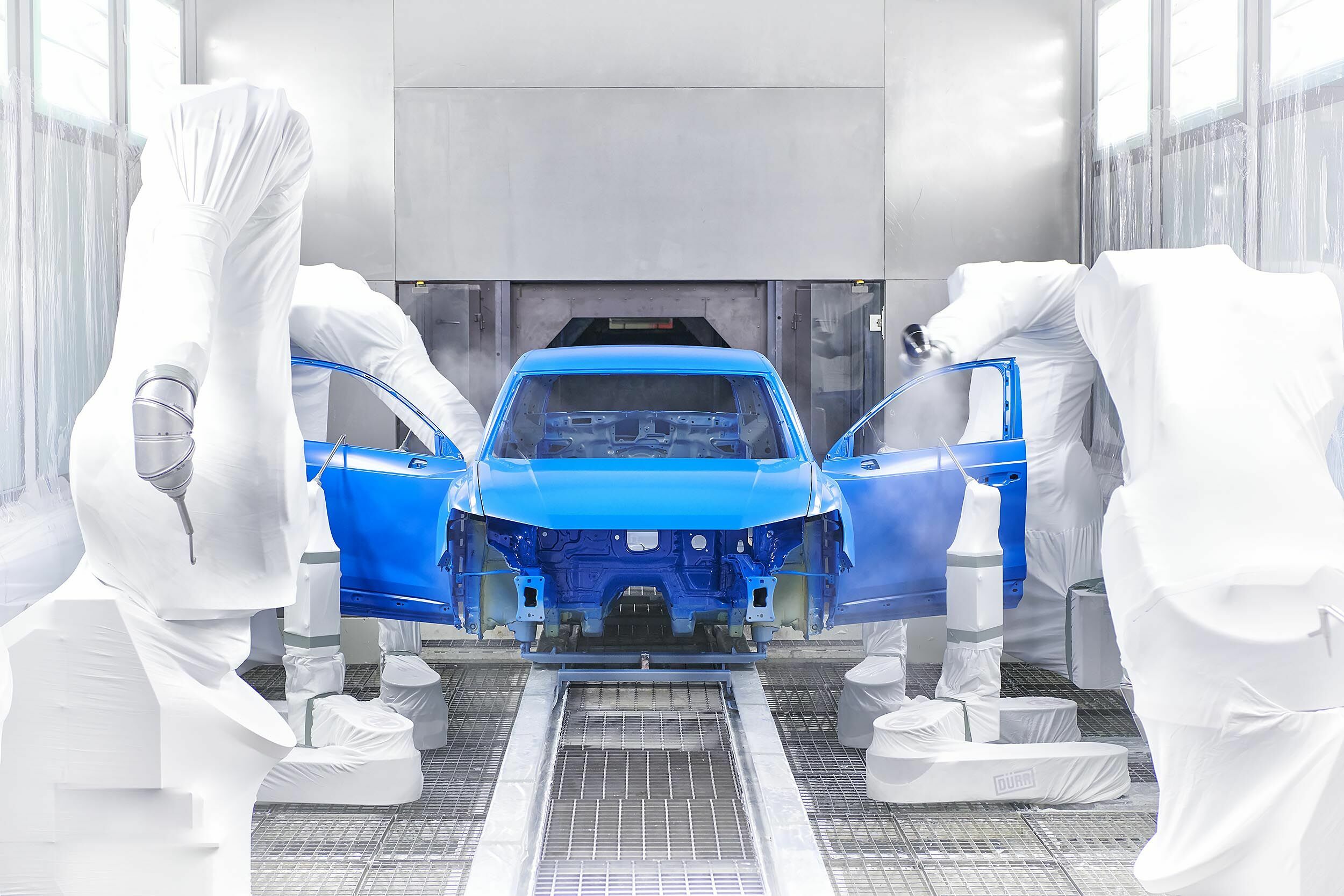 History
History
1993 AUDI HUNGARIA MOTOR Kft. is founded as a 100-percent subsidiary of AUDI AG 1994 Start of four-cylinder engine series production; Official opening of the engine plant 1997 Start of V6 engine series production; Start of V8 engine series production 1998 Establishment of the crankshaft and connecting rod processing line; Start of automobile assembly with the Audi TT Coupé 1999 Start of series assembly of the Audi TT Roadster models 2000 Start of production of diesel engines with pump-nozzle technology 2001 Opening of the Engine Development Center; Assembly of the Audi A3/Audi S3 models begins in Győr, produced until 2003 2005 June 2005: 10 millionth engine from Győr; Audi Hungaria toolmaking goes into operation 2007 Start of production of the Audi A3 Cabriolet; Start of series production of four-cylinder common-rail diesel engines; Start of series production of ten-cylinder biturbo engines 2008 Start of series production of twelve-cylinder TDI engines 2010 Opening of the engine start-up center Start of series production of the Audi RS 3 Sportback 2011 April 2011: Production of the 20 millionth engine from Győr July 2011: Groundbreaking ceremony for plant expansion 2012 May 2012: Topping-out ceremony for the new automobile plan Nov. 2012: Start of production of the new 1.2 and 1.4 liter four-cylinder engines 2013 Audi Hungaria opens its expanded plant in June 2013; series production of the Audi A3 Sedan and the Audi A3 Cabriolet begins at the same time; Sept. 2013: 10,000 employees at the plant; Nov. 2013 Double anniversary: 500,000.
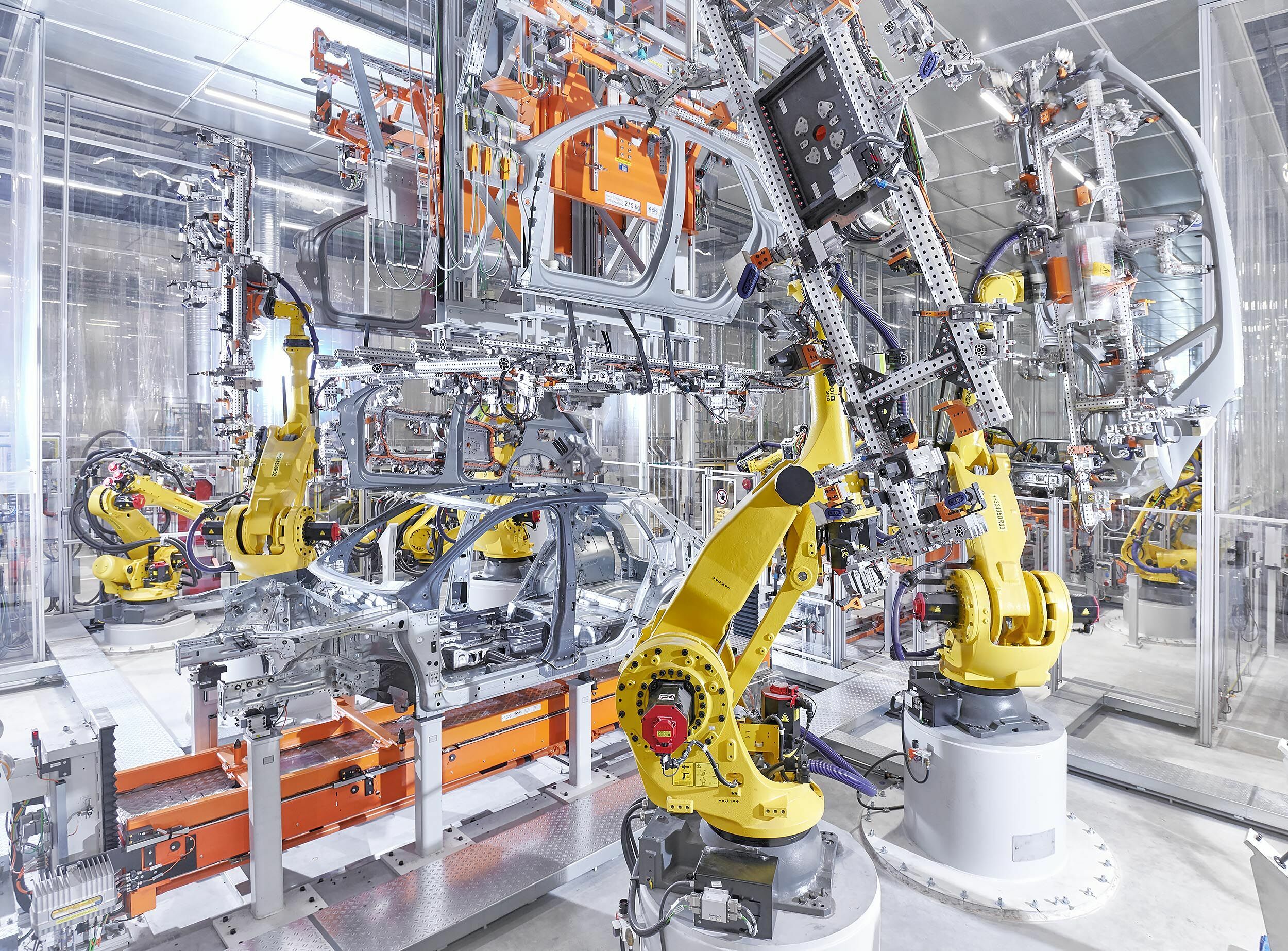 Profile of location
Profile of location
AUDI HUNGARIA Zrt. develops and produces drive systems in Győr, Hungary, for AUDI AG and other companies in the Volkswagen Group. The company produces more than 170,000 Audi vehicles annually and body components for Audi and the Volkswagen Group’s exclusive and sport models. Moreover, Audi Hungaria offers the entire Volkswagen Group various competence-oriented services. Since its foundation in 1993, Audi Hungaria has become one of the country's largest exporters and most profitable companies. Audi Hungaria is also one of the largest foreign investors in Hungary and the biggest employer in the region, with 11,663 employees as of December 31, 2023. Engine production The site has manufactured drive systems for Audi and the Volkswagen Group since 1994. Over the years, the company has become the largest powertrain factory in the world. In 2023, Audi Hungaria produced 1,660,425 powertrains in Győr for 35 Volkswagen Group production sites. Of the engines manufactured in 2023, 1,164,289 were three- and four-cylinder gasoline and diesel engines. The site’s employees also produced 19,734 five-cylinder gasoline engines, 277,0081 six-cylinder gasoline engines, 78,905 six-cylinder diesel engines, and 6,216 ten-cylinder engines. Additionally, 114,058 electric axle drive units were manufactured in Győr. In all, Audi Hungaria built five different gasoline and two diesel engine variants in 2023, as well as two families of electric drive systems with a power spectrum from 90 kW (122 PS) to 180 kW (244 PS). Electric axle drives have been produced in Győr since 2018. In the intervening years, its share of total production volume has risen sharply. The electric motors are installed in the Audi Q8 e-tron, Audi Q5 e-tron and Porsche Macan. The new electric drive systems for the Group’s fully electric models will also be supplied from Győr. They are based on the Premium Platform Electric (PPE), developed jointly with Porsche. In 2012, a new manufacturing area was set up to produce them.
